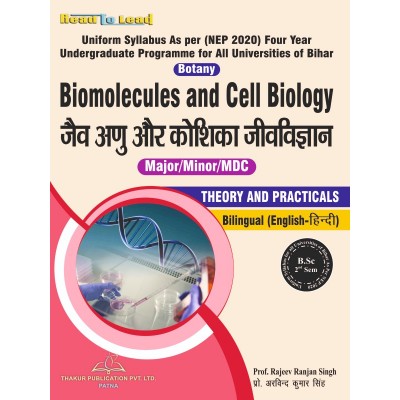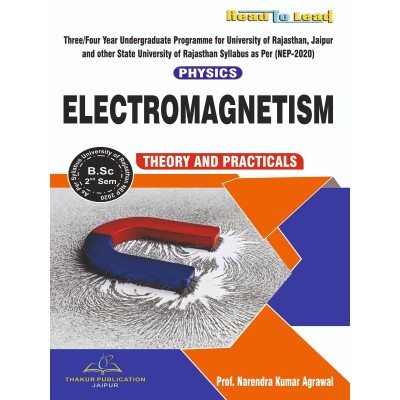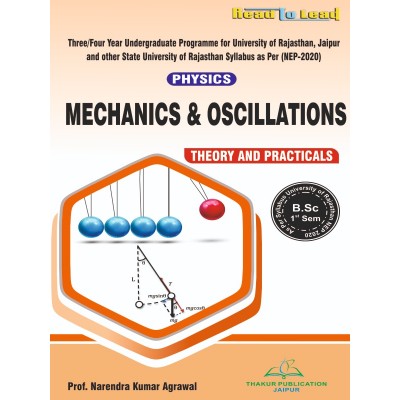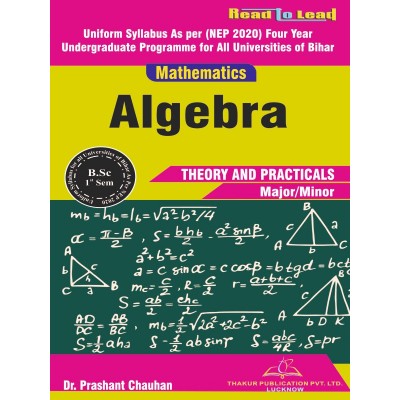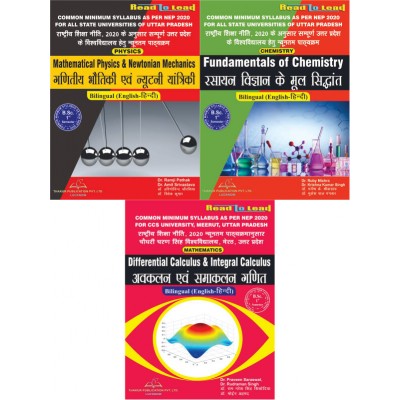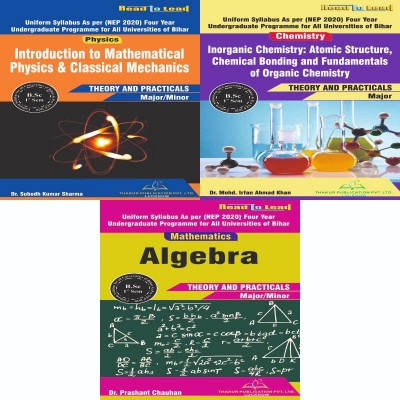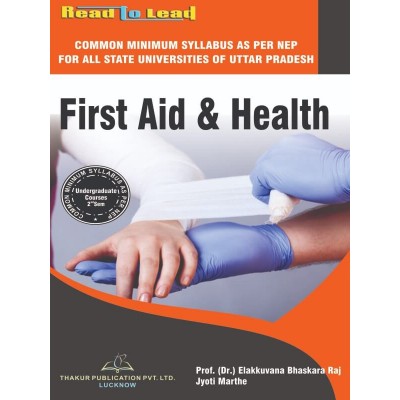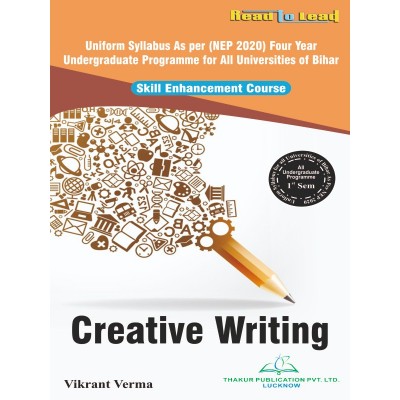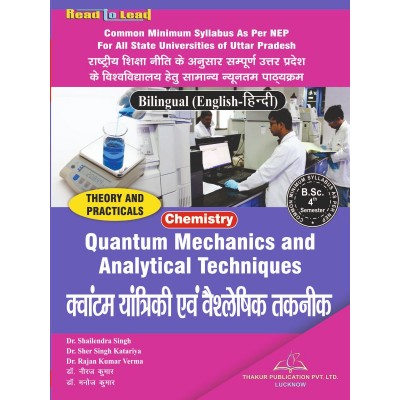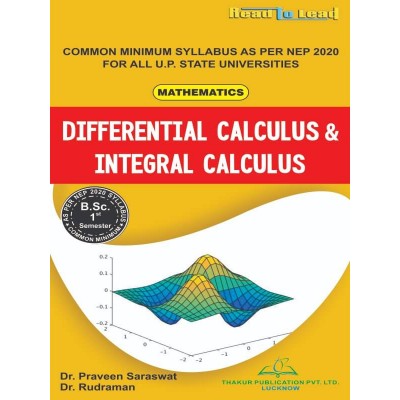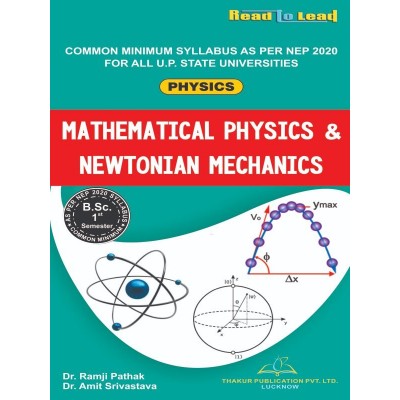Categories
- Pharmacy
-
Nursing
-
MBA
-
BBA
- U.P. State University
- Veer Bahadur Singh Purvanchal University, Jaunpur
- Chaudhary Charan Singh University, Meerut
- Dr. Bhimrao Ambedkar University, Agra
- Chhatrapati Shahu Ji Maharaj University, Kanpur
- Mahatma Jyotiba Phule Rohilkhand University, Bareilly
- Mahatma Gandhi Kashi Vidyapith, Varanasi
- Dr. Ram Manohar Lohia Avadh University, Ayodhya
- Deen Dayal Upadhyaya Gorakhpur University
- Prof. Rajendra Singh (Rajju Bhaiya) University, Prayagraj
-
BCA
- UP State Universities
- University of Pune
- I.K.Gujral Punjab Technical University (PTU)
- University of Rajasthan
- Rashtrasant Tukadoji Maharaj Nagpur University
- Uttar Pradesh NEP2020
- University of Rajasthan ,Jaipur (According to NEP-2020)
- BCCA (B. Com - Computer Science)
- Haryana
- West Bengal
- BBA (CA)
- PUNE BCA (Sci,Commerce)/B.Com (CA)
- Dr. A. P. J. Abdul Kalam Technical University, Lucknow ( AKTU )
- MCA
-
B Ed
- Lucknow University B.Ed Books
- Chaudhary Charan Singh University/Maa Shakambhari University, Saharanpur
- Dr Bhim Rao Ambedkar University, Agra
- Mahatma Gandhi Kashi Vidyapeeth, Varanasi
- Chhatrapati Shahu Ji Maharaj University
- Prof. Rajendra Singh (Rajju Bhaiya) University, Prayagraj (PRSU)
- Mahatma Jyotiba Phule Rohilkhand University(Mjpru), Bareilly
- Dr. Ram Manohar Lohia Avadh University, Ayodhya
- Bundelkhand University, Jhansi
- B.A,B.ed
- B.Sc, B.ed
- Deen Dayal Upadhyaya Gorakhpur University
- Veer Bahadur Purvanchal University (VBPU)
- Maharaja Suhel Dev State University ,Azamgarh (MSDSU)
- Raja Mahendra Pratap Singh State University, Aligarh (RMPSSU)
- Barkatullah Vishwavidyalaya (Bhopal)
- Jiwaji University (Gwalior)
- Vikram University (Ujjain)
- Dr. Harisingh Gour University (Sagar)
- Devi Ahilya Vishwavidyalaya (Indore)
- Rani Durgavati Vishwavidyalaya (Jabalpur)
- Awadhesh Pratap Singh University (Rewa)
- Maharaja Chhatrasal Bundelkhand University (Chhatarpur)
- D. EL. ED
- TET
-
B Com
-
B Sc
- B.Sc. U.P. State Universities Common Syllabus NEP
- Veer Bahadur Singh Purvanchal University, Jaunpur
- University of Lucknow
- Chaudhary Charan Singh University, Meerut
- Madhya Pradesh
- Chhatrapati Shahu Ji Maharaj University, Kanpur
- Dr. Bhimrao Ambedkar University, Agra
- Mahatma Gandhi Kashi Vidyapith, Varanasi
- DEEN DAYAL UPADHYAYA GORAKHPUR UNIVERSITY
- Prof. Rajendra Singh (Rajju Bhaiya) University, Prayagraj
- Dr. Ram Manohar Lohia Avadh University, Ayodhya
- Mahatma Jyotiba Phule Rohilkhand University, Bareilly
- Uttarakhand State Universities
- B.Sc. Bihar Universities Common Syllabus NEP
- University of Rajasthan (Jaipur)
- Haryana
-
Bachelor of Arts [B.A.]
- B.A. Of U.P. State Universities Common Syllabus NEP
- Veer Bahadur Singh Purvanchal University, Jaunpur
- University of Lucknow
- Chaudhary Charan Singh University, Meerut
- Chhatrapati Shahu Ji Maharaj University, Kanpur
- Dr. Bhimrao Ambedkar University, Agra
- Mahatma Gandhi Kashi Vidyapith, Varanasi
- Deen Dayal Upadhyaya Gorakhpur University
- Prof. Rajendra Singh (Rajju Bhaiya) University, Prayagraj
- Dr. Ram Manohar Lohia Avadh University, Ayodhya
- Mahatma Jyotiba Phule Rohilkhand University, Bareilly
- Madhya Pradesh
- Uttarakhand
- Bihar
- University of Rajasthan (Jaipur Syllabus as Per NEP2020)
- Haryana NEP-2020
- B Tech
- LLB
- SWA Education
Fundamentals Of Chemistry Book B.Sc 1st Sem U.P. State Universities
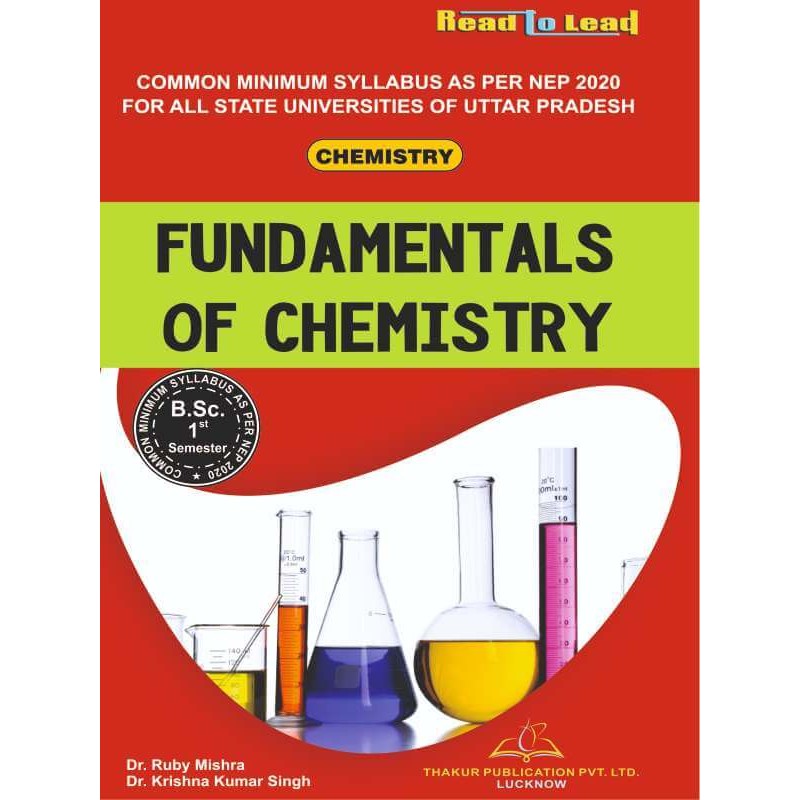
Click below to Buy E-Book Edition:
₹145 E-BOOK GOOGLE PLAY
Buy Latest Fundamentals of Chemistry B.Sc. 1 Sem Chemistry Book specially designed for U.P. State universities by Thakur Publication
ISBN- 978-93-5480-149-5
AUTHORS- Dr. Rubby Mishra, Dr. Krishna Kumar Singh
Tax excluded
Click below to Buy E-Book Edition:
₹145 E-BOOK GOOGLE PLAY
Buy Latest Fundamentals of Chemistry B.Sc. 1 Sem Chemistry Book specially designed for U.P. State universities by Thakur Publication
ISBN- 978-93-5480-149-5
AUTHORS- Dr. Rubby Mishra, Dr. Krishna Kumar Singh
Syllabus
FUNDAMENTALS OF CHEMISTRY
Course Code: B020101T
|
Units |
Topics |
No. of Lectures |
|
Total No. of Lectures = 60 |
||
|
I |
Introduction to Indian ancient Chemistry and contribution of Indian Chemists, in context to the holistic development of modern science and technology, should be included under Continues Evaluation (CIE)
Molecular Polarity and Weak Chemical Forces: Resonance and resonance energy, formal charge, Van der Waals forces, ion-dipole forces, dipole-dipole interactions, induced dipole interaction, dipole moment and molecular structure (Diatomic and polyatomic molecules), Percentage ionic character from dipole moment, polarising power and polarisability. Fajan’s rules and consequences of polarisation. Hydrogen bonding, Van der Waals forces, ion-dipole forces, dipole-dipole interactions, induced dipole interaction. |
(10) |
|
II |
Simple Bonding Theories of Molecules: Atomic orbitals, Aufbau principle, multiple bonding (σ and π bond approach) and bond lengths, the Valence Bond Theory (VBT), Concept of hybridisation, hybrid orbitals and molecular geometry, Bent’s rule, Valence Shell Electron Pair Repulsion theory (VSEPR), shapes of the following simple molecules and ions containing lone pairs and bond pairs of electrons: H2O, NH3, PCl5, SF6, SF4, ClF3, I3–, and H3O+. Molecular Orbital Theory (MOT). Molecular orbital diagrams bond orders of homonuclear and heteronuclear diatomic molecules and ions (N2, O2, C2, B2, F2, CO, NO, and their ions) |
(10) |
|
III |
Periodic properties of Atoms (with reference to s & p-block): Brief discussion, factors affecting and variation trends of following properties in groups and periods. Effective nuclear charge, shielding or screening effect, Slater rules, atomic and ionic radii, Electronegativity, Pauling’s/Allred Rochow’s scales, ionisation enthalpy, electron gain enthalpy. |
(05) |
|
IV |
Recapitulation of basics of Organic Chemistry: Hybridisation, bond lengths and bond angles, bond energy, localised and delocalised chemical bonding, Van der Waals interactions, inclusion compounds, clatherates, charge transfer complexes, hyperconjugation, Dipole moment; Electronic Displacements: Inductive, electromeric, resonance mesomeric effects and their applications. |
(05) |
|
V |
Mechanism of Organic Reactions: Curved arrow notation, drawing electron movements with allows, half-headed and double-headed arrows, homolytic and heterolytic bond fission, Types of reagents – electrophiles and nucleophiles, Types of organic reactions, Energy considerations. Reactive intermediates – carbocations, carbanions, free radicals, carbenes, arynes and nitrenes (with examples). |
(10) |
|
VI |
Stereochemistry: Concept of isomerism, Types of isomerism; Optical isomerism – elements of symmetry, molecular chirality, enantiomers, stereogenic centre, optical activity, properties of enantiomers, chiral and achiral molecules with two stereogenic centres, diasteromers, threo and erythro diastereomers, meso compounds, resolution of enantiomer, inversion, retention and racemisation. Relative and absolute configuration, sequence rules, D & L and R & S systems of nomenclature. Geometric isomerism – determination of configuration of geometric isomers, E & Z system of nomenclature, geometric isomerism in oximes and alicyclic compounds. Conformational isomerism – conformational analysis of ethane and n-butane; conformations of cyclohexane, axial and equatorial bonds, conformation of mono substituted cyclohexane derivatives, Newman projection and Sawhorse formulae, Fischer and flying wedge formulae, Difference between configuration and conformation. |
(10) |
|
VII |
Basic Computer System (in brief): Hardware and Software; Input devices, Storage devices, Output devices, Central Processing Unit (Control Unit and Arithmetic Logic Unit); Number system (Binary, Octal and Hexadecimal Operating System); Computer Codes (BCD and ASCII); Numeric/String constants and variables. Operating Systems (DOS, WINDOWS, and Linux); Introduction of Software languages– Low level and High level languages (Machine language, Assembly language; QBASIC, FORTRAN) Software Products (Office, chemsketch, scilab, matlab, hyperchem, etc.), internet application. |
(05) |
|
VIII |
Mathematical Concepts for Chemistry Logarithmic relations, curve sketching, linear graphs and calculation of slopes, differentiation of functions like Kx, ex, Xn , sinx, logx; maxima and minima, partial differentiation and reciprocity relations, Integration of some useful/relevant functions; permutations and combinations, factorials, probability. |
(05) |
16 other products in the same category:
Your review appreciation cannot be sent
Report comment
Report sent
Your report cannot be sent
Write your review
Review sent
Your review cannot be sent









